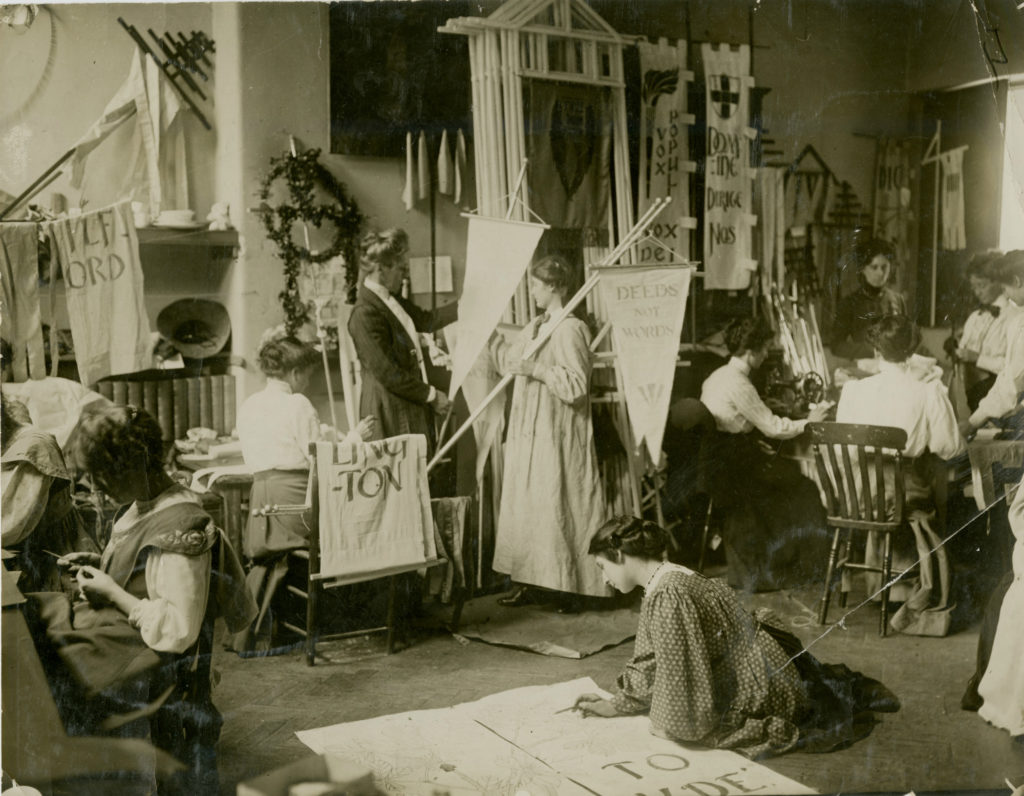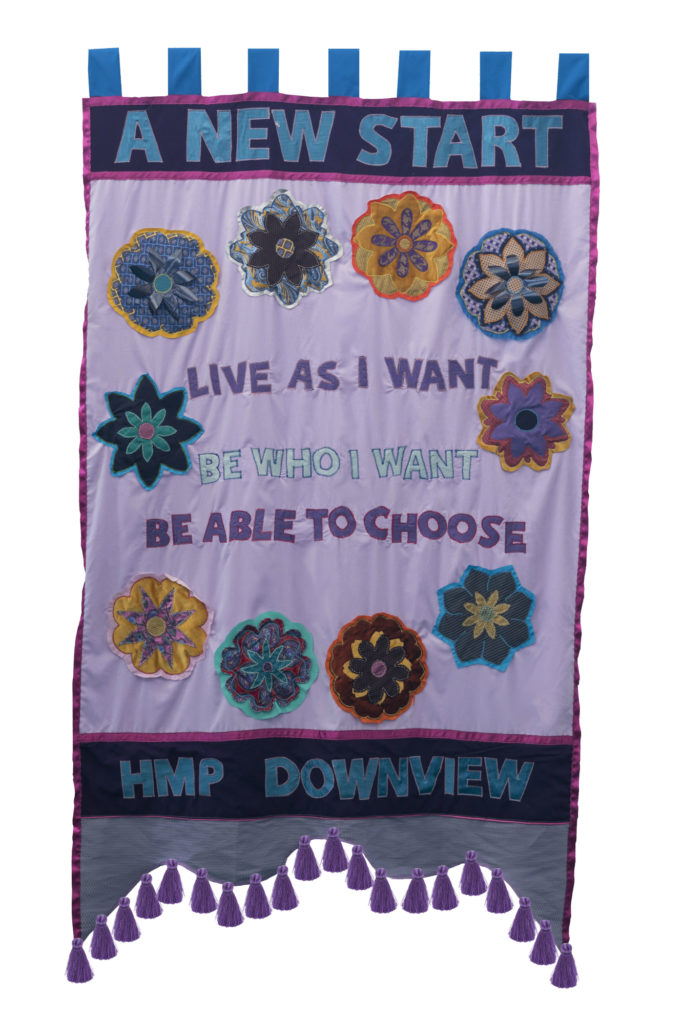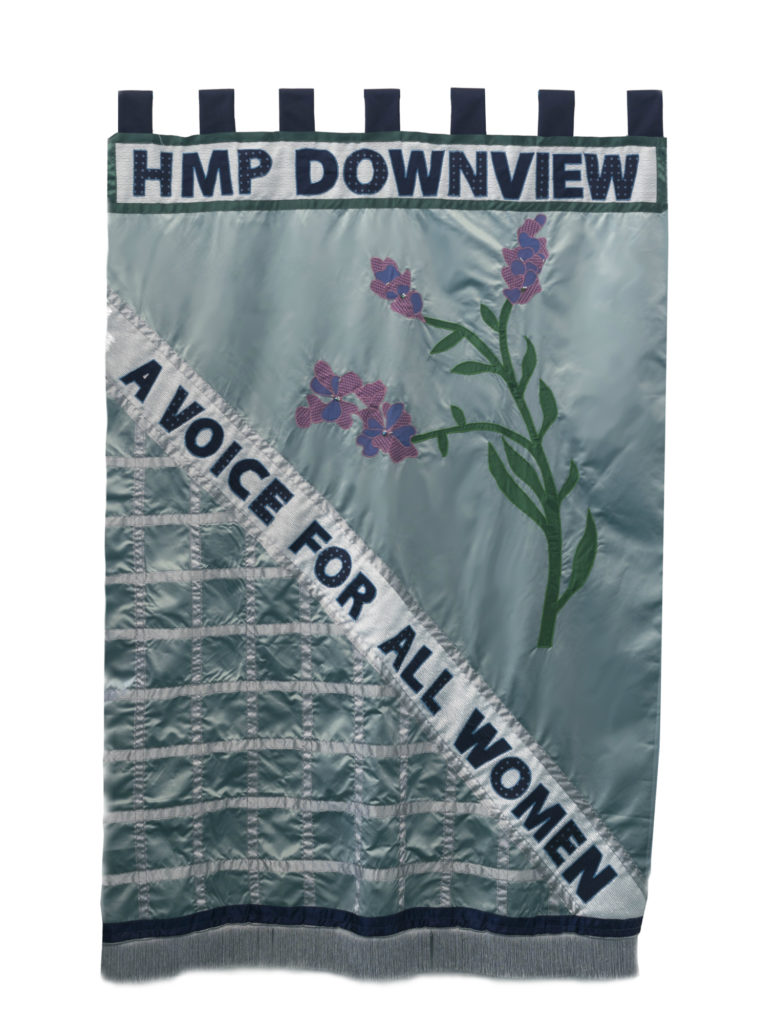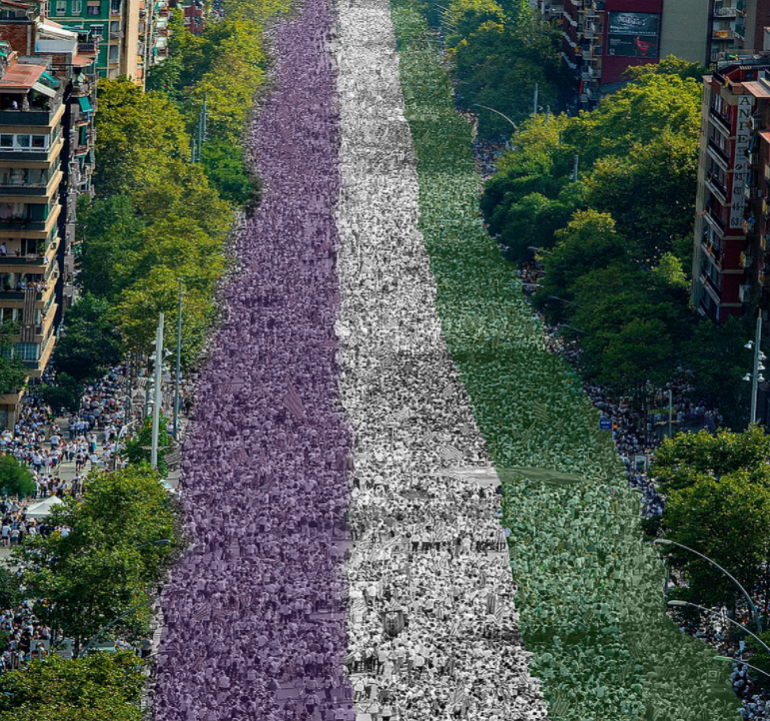Art World
This British Artist Teamed Up With Prisoners to Commemorate Women’s Suffrage in the UK
Tens of thousands of women are due to take part in a procession this weekend to mark the centenary of the beginnings of women's suffrage in the UK.

Tens of thousands of women are due to take part in a procession this weekend to mark the centenary of the beginnings of women's suffrage in the UK.

Javier Pes

Tens of thousands women and girls are due to follow in the footsteps of campaigners for female suffrage when they march with in a colorful procession, banners aloft, in London, Cardiff, Edinburgh, and Belfast on Sunday, June 10. The event, which marks the 100th anniversary of the beginnings of women gaining the right to vote in the UK, is expected to be one of the largest collective performance artworks in the UK’s history.
Of the hundred handmade banners made for the event by groups across the UK, there will be six that have a special significance. They have been created by female inmates at Downview prison with the artist Lucy Orta in collaboration with students from the London College of Fashion, where Orta is a professor. Based in London and France, where she has worked with prison inmates in the past, Lucy Orta is one half of the duo, Studio Orta.

Lucy Orta and London College of Fashion students at a banner making workshop at HM Prison Downview. Photo by Michelle Marshall.
Art and banner-making can “break down walls,” Orta tells artnet News. The collaboration also has heightened significance, she says, because Downview was one of the prisons that replaced Holloway in London, where hundreds of the suffragettes were imprisoned, many forcibly fed when on hunger strike, at the height of their campaign more than 100 years ago.

Processions banner by the artist Lucy Orta and women of HMP Downview, commissioned by Historic England, coordinated by London College of Fashion. Photo by Lance Tabraham.
Orta and the Center for Sustainable Fashion at the London College of Fashion have been working with inmates as part of an initiative developed with the Ministry of Justice called Make for Change. It helps women gain new skills that will hopefully boost their chances of employment after their release. “It is an incredible example of social responsibility,” Orta says. When the organization Historic England commissioned Orta to create signs for the procession, she immediately thought of the women in Downview, which is located just outside London in Surrey.
While most of the women in Downview who helped design and make the banners for Sunday’s marches will still be serving their sentences, at least one ex-inmate is due to take part, artnet News understands.

Processions banner by the artist Lucy Orta and women of HMP Downview, commissioned by Historic England, coordinated by London College of Fashion. Photo by Lance Tabraham.
Women across Britain stepped up their campaign to win the vote in the late 19th century, a struggle that became increasingly militant in the years before World War I. Banners played a crucial role in proclaiming their message. In 1908, 10,000 women marched in London, the first in a new style of spectacular procession for which the artist Mary Lowndes designed many of the banners.
Not every women gained the right to vote in 1918. The right applied to women over the age of 30 who owned property, were married to someone who owned property, or who were graduates of British universities. Women were able to vote on the same terms as men only a decade later, in 1928.
The design for the Downview banners draws upon the history and iconography of the suffragette campaign. Through workshops and inmates’ testimonies, the project considers what it means to be a woman today and reflects on the power of the vote. (Prisoners in Britain lose their right to vote.)

Rendering of Processions 2018, courtesy of Artichoke.
The marches in the four cities across the UK on Sunday aim to become one of the country’s largest mass participation artworks. Around 45,000 women and girls are expected to take part, many accessorized in the suffragette colors of purple, white, and green. (Men can show their support from the sidelines.) Called Processions, it has been produced by the arts agency Artichoke and commissioned by 14-18 NOW, the government-backed contemporary arts program that has been marking the centenary of World War I for the past four years.